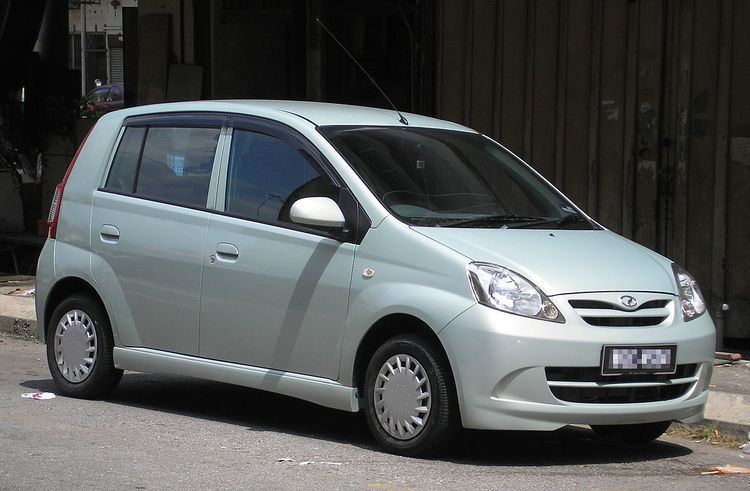Class City car Layout FF layout | Production 2007–2014 Related | |
 | ||
The Perodua Viva is a city car manufactured by Malaysian automaker Perodua since 10 May 2007. It was originally planned to be the replacement of Perodua's current city cars - the Perodua Kancil and the Perodua Kelisa. Once launched, Perodua decided to market it as a Kelisa replacement only, and will continue to sell the Kancil. The Perodua Viva is based on the 7th generation Daihatsu Mira. All of the Perodua Viva models use Daihatsu DVVT engines. Only the Premium version comes with dual airbags and ABS. The Perodua Viva was taken out of production and succeeded by the Perodua Axia following its launch on 15 September 2014.
Contents
Specifications
The Viva was initially launched with six models. They are: 660EX manual, 850EX manual, 1.0SX Standard manual, 1.0SXi Premium manual, 1.0EZ Standard automatic and the 1.0EZi Premium automatic. The range was later updated on the 23 July 2009 with the Viva 660BX manual (Kancil replacement model), Viva Elite manual, Viva Elite automatic, Viva Elite EZi and Viva 1.0BZ automatic.
The suspension is typical of small hatchbacks with MacPherson struts in front located by an L-shaped lower arm. At the rear, Viva is fitted with a torsion beam axle and trailing arms. The suspension geometry has been optimised for better steering response and ride comfort. The 1000 cc models have power-assisted steering, optional auto transmission and also a front stabilizer. The 660 cc and 850 cc are barebones basic models, devoid of power steering and auto transmission. As the Viva is based on Daihatsu Mira Avy, a kei car, it has a compact exterior dimensions and a small turning radius. It is roomy for its class, with enough room to seat five adults.
Engines and performance
The Viva comes with 3-cylinder engine choices: 660 cc, 850 cc and 1000 cc. They are familiar engines but updated with modern technology such as DVVT (Dynamic Variable Valve Timing) and EFI, and they all have twin overhead camshafts to provide even stronger low-speed pulling power, resulting in fewer gearchanges, yet also manages to increase top end power. Other innovations include a resin port intake manifold and a head cover incorporating an air-cleaner casing.
Fuel economy varies from 15.1 km/l (42.6 mpg (imp)) for the fully loaded 1 litre auto version to the very thrifty 18.7 km/l (54 mpg) for the basic 660 cc model. For the 1 litre manual the 0–100 km/h time is about 12.8 seconds. The engine torque band is not particularly peaky and timing it takes to hit 70 km/h (43 mph) is good. It may be pushed to 130 km/h (81 mph) without much effort. However the engine drones at such speeds. Top speed is around 160 km/h (99 mph).
